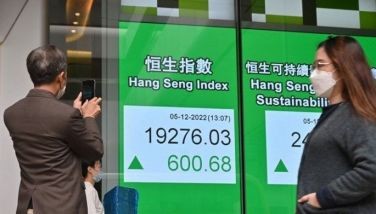IMF further trims Philippine growth forecast
MANILA, Philippines - Small downward revisions to Philippine economic growth forecasts by the International Monetary Fund (IMF) are likely after first-quarter expansion turned out to be slower than originally estimated.
“The second-quarter growth is broadly in line with what we expected, but the first quarter got revised a little so the forecast would somewhat be affected,” IMF resident representative Shanaka Jayanath Peiris told reporters yesterday.
Pressed for details, Peiris said a “small minor adjustment, potentially downwards” would be made by the multilateral lender to its 6.2-percent growth forecast for the year. The current forecast was already trimmed from the original 6.7 percent last July.
“Around six-percent growth is (still) not far-fetched,” Peiris said on the sidelines of a private equity forum in Makati City.
For 2016, the IMF would likely keep its forecast of 6.5 percent growth, he said.
The government is targeting seven to eight-percent gross domestic product (GDP) growth this year, but had admitted that reaching it could be a challenge.
First quarter GDP growth was trimmed to five percent from the original 5.2 percent after the agriculture and mining industries recorded slower growth, data from the Philippine Statistics Authority showed.
Economic growth stood at 5.6 percent in the April-June period, bringing the first-semester uptick to 5.3 percent. Budget Secretary Florencio Abad, in a text message, said growth targets this year would likely be revised.
Peiris, however, said the IMF remains optimistic in the Philippines, noting “temporary exogenous factors” are likely to dissipate later in the year.
“It’s actually global factors, including temporary factors. The agriculture is down because of El Niño. Exports are affected by the global slowdown and then there was also the slowdown in public spending, which is picking up,” Peiris said.
“But fixed investments are quite solid, (and) we don’t see this slowing down. So we think overall there is temporary slowdown, but we should have a bounce back in the second half of the year,” he said.
The acceleration is expected to spill over early next year, Peiris said, noting public spending, which rose by its fastest this year at 17 percent in June, will trend higher as elections approach.
Challenges, however, remain, with the IMF representative pointing to unemployment and income inequality, which remain high when compared with those of Asian peers. Infrastructure gaps would also need to be addressed.
“The participation of the Philippines in global value chain is another issue. The value added of the Philippine trade sector is very low. The tariffs have gone down, but behind the border costs are still quite high,” Peiris said, pointing to monopolies and foreign investment restrictions.
“There is a huge opportunity for the Philippines, but we need to address these issues,” he said.
- Latest
- Trending




























